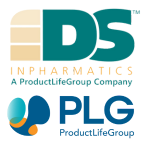It is a complicated and lengthy process to bring a product to market, even more so when producing a sterile product, for example, ophthalmic preparations, injections, dialysis solutions, irrigation fluids and more.
Sterile filtration is the only technique for the removal of microorganisms that does not negatively affect the product, and those procedures must be evaluated using filter validation to confirm that the correct filter has been employed to remove any microorganisms.

Image Credit: DSI, a PLG Company
To start, it is crucial to establish the product formulation and carry out some initial compatibility investigations, explains senior drug product consultant Shelli Connelly from DSI, a ProductLife Group company.
This can be achieved by obtaining 47 mm disc filters to evaluate the filter’s compatibility with the product. Businesses may select an incorrect filter if they do not have sufficient knowledge of the product.
If you’re unsure or you don’t have enough experience with preliminary compatibility studies, reach out to filter vendors and get them to do a filterability test upfront. They can pick out four or five different filters, looking at what your product formulation is, and do a quick study to help you pick the right filter before you start.”
Shelli Connelly, DSI, a ProductLife Group Company.
The size of the filter is the next important consideration. Filter size usually depends on the batch size and the bio-load throughout the process of formulation.
Data regarding the product formulation is required to make this choice. For example, a business may investigate whether the formulation is more viscous or could clog the filter.
“The majority of injectable sterile products are going to be 10 inches or smaller,” Shelli explains. “If you have a 100- or 200-liter batch, normally you are using a four-inch or six-inch filter.”
Types of filters
Historically, filters and disks were often stored in stainless steel housings. Disposable filters are the current trend, which come ready-to-use, are robust and remove the danger of configuration issues or failure.
Certain products require a jacketed stainless steel filter housing for heat during filtration, which means disposable filters cannot be utilized for these products.
After a filter has been chosen, the next stage is the sterilization process. Shelli states that if a sterilizing filter at 0.2 microns is being used, it must be taken through a kind of sterilizing process, either gamma irradiation or autoclave, which will depend on what the manufacturing plant prefers or has in place.
Validating filters
As it is a requirement for regulatory filing, the sterility assurance and validation process must be performed either before or alongside registration batches.
“For commercial products, if you change the batch size and go bigger, or make any other change, or if your filter parameters change in any way, you will have to go back and revalidate your filter validation in support of the product,” Shelli states.
Shelli asserts that pre-use filter testing is widely irrelevant because filter producers integrity test all of their filters, so it is incredibly rare for filters to fail.
“Each filter is integrity tested to show that it meets its minimum bubble point requirements based on what the vendor has provided,” she explains, stating that the aim of a bubble point test is to place pressure on the filter’s upstream side to enable air to move through the pores.
“The bubble point value is in relation to the micron size of the filter. For the 0.2 micron filters, it’s normally around 50 psi,” Shelli states.
A key factor to consider with integrity testing is to investigate the calibration data created by the tester as the filter values can be affected by this.
The validation process
A filter validation supplier delivers an information product sheet to the manufacturer to request the information required at the beginning of the process.
This includes the batch size, how the filter is sterilized, temperature requirements (room temperature, cold), flow rate per minute, whether it will be a constant filtration, for example, from bag to bag or tank to tank, or whether an intermittent filtration is planned and for how long.
All this data is required for the vendor to effectively carry out the validation.
Shelli says, “One word of caution is that if you are uncertain of what your batch sizes are going to be from a commercial standpoint, do a worst-case scenario to give yourself some wiggle room.”
She continues, “You might start out thinking your batch is only going to be 200 liters, but a year later you have a blockbuster product and have to scale up to 400 liters. In that case, you will have to repeat your filter validation and that is not cheap. If you think intermittent filtration will be 24 hours, then validate for 36 to 48 hours. Don’t validate your process at a set batch size, give a range. It will save you time and money in the long run.”
Filter validation is performed alongside additional validation processes, for example, media fills where aseptic manufacturing processes are validated to confirm that they are sufficiently protected from contamination during drug manufacturing.
It is critical to make sure that the filter validation and media fill project are in sync. For filter validation, workspace parameters must be equal to or higher than an aseptic media perspective so they can perform in alignment.
“When selecting a filter, choose the right membrane from a media perspective,” Shelli states. “Make sure you’re picking a membrane that’s water-based but also focus on whatever type of connections you’re using for the product to ensure your connections for your media are the same.”
Filter validation in the submission process
The main four filter validations that are being performed today are compatibility, product bubble point, bacterial retention and extractables, which regulators are requesting more as it helps to measure, evaluate and establish that the product-contact materials will not negatively impact the safety of the product.
“With extractables, most of the vendors use almost a worst-case scenario solvent stream where you’re at low and high pH’s, and they’re using solvents to ensure that nothing is getting extracted off the filter and into your product,” Shelli explains. “Vendors can do this easily because they have all the data to assess worst-case scenarios.”
A strong partnership is crucial with filter validation, and locating a partner with expertise in correctly documenting and evaluating each component is crucial to a successful end-product.
Missteps or failure can result in expensive delays in getting the product to market.
Acknowledgments
Produced from materials originally authored by Meranda Parascandola from Design Space InPharmatics
About DS InPharmatics 
DS InPharmatics (DSI) provides regulatory, technical, and project management consulting services to healthcare product companies that manufacture and/or market pharmaceuticals, biopharmaceuticals, and cellular and gene therapy products.
Since 2007 we have provided our clients with innovative strategies and exceptional quality work products intended to enhance product development, approval, and marketing presence. Whether advocating CMC strategy, directing CMC operations or developing CMC submission content that represent the best interests of emerging biotech, we focus on the critical CMC issues and build programs that enhance development.
In April 2021 we were thrilled to announce that DSI has just become part of ProductLife Group.
French-headquartered ProductLife Group (PLG) is well-known in the Life Sciences market. It has a track record of successfully managing global outsourcing programs and insourcing services for its international client base. The company is on a mission to help transform human health outcomes by optimizing regulatory affairs, safety & vigilance, and quality compliance for life sciences organizations worldwide.
The fit between our two organizations could not be more perfect. We will complement PLG's growing biotech services portfolio. US biotech sponsors recognize DSI as a leader in consulting for go-to-market strategies and RA pre-market consulting. At the same time, PLG has a strong reputation for managing end-to-end outsourcing of regulatory affairs and pharmacovigilance activities worldwide.
Our merger with PLG will harness our combined strengths, offering our clients on both sides of the Atlantic support with their developed drugs approvals and post-approvals compliance, plus advisory services on the best market strategies to deliver a rapid ROI on their development. Together we will offer our clients increased pharmacovigilance capabilities - including a QPPV; pharmacovigilance consulting; and a fully validated safety database - as well as complementary toxicology-related services; RIM/electronic document management services; and support for medical device regulatory requirements.
We see enormous potential in this new chapter for DSI and you, our clients. As a PLG company, we have the opportunity to become part of a global force in life sciences regulatory and compliance solutions and services, and we're incredibly excited to add our momentum to that effort.
Sponsored Content Policy: News-Medical.net publishes articles and related content that may be derived from sources where we have existing commercial relationships, provided such content adds value to the core editorial ethos of News-Medical.Net which is to educate and inform site visitors interested in medical research, science, medical devices and treatments.